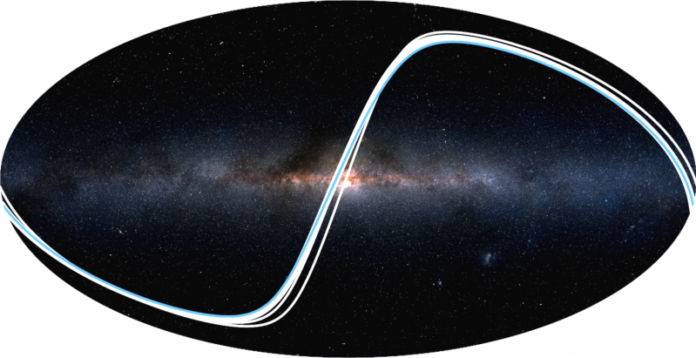Scientists at the Queen’s University Belfast along with Max Planck Institute for Solar System Research in Germany have recently found that at least 9 exoplanets are ideally placed to observe transits of Earth. The study offers an overview on how other worlds detect Earth using our own methods.
Scientists used SuperWASP and Kepler and discovered thousands of planets orbiting stars other than our Sun. By far most of these are discovered when the planets cross before their host stars in what is known as ‘transits’. This allowed astronomers to see light from the host star at regular intervals when the planet passes between us and the distant star.
Scientists reverse this concept and asked, “How would an alien observer see the Solar System?”
They identified parts of the distant sky from where various planets in Solar System could be seen to pass in front of the Sun. It concludes that the terrestrial planets are more likely to be spotted than the more distant ‘Jovian’ planets.

Lead author Robert Wells said, “Larger planets would naturally block out more light as they pass in front of their star. However the more important factor is actually how close the planet is to its parent star– since the terrestrial planets are much closer to the Sun than the gas giants, they’ll be more likely to be seen in transit.”
Scientists then looked for parts of the sky from which more than one planet could be seen. They wanted to search the worlds where civilizations would have the best chance of spotting our Solar System. They found 3 planets that could be observed from anywhere outside of the Solar System.
Katja Poppenhaeger, a co-author of the study said, “We estimate that a randomly positioned observer would have roughly a 1 in 40 chance of observing at least one planet. The probability of detecting at least two planets would be about ten times lower, and to detect three would be a further ten times smaller than this.”
They identified almost sixty-eight worlds that transit the sun. Among them, 9 other worlds are ideally placed to observe transits of Earth, although none of the worlds are deemed to be habitable.
Based on the data, they estimate, “there should be approximately ten (currently undiscovered) worlds which are favorably located to detect the Earth. All might capable of sustaining life as we know it. To date, however, no habitable planets have been discovered from which a civilization could detect the Earth with our current level of technology.”
